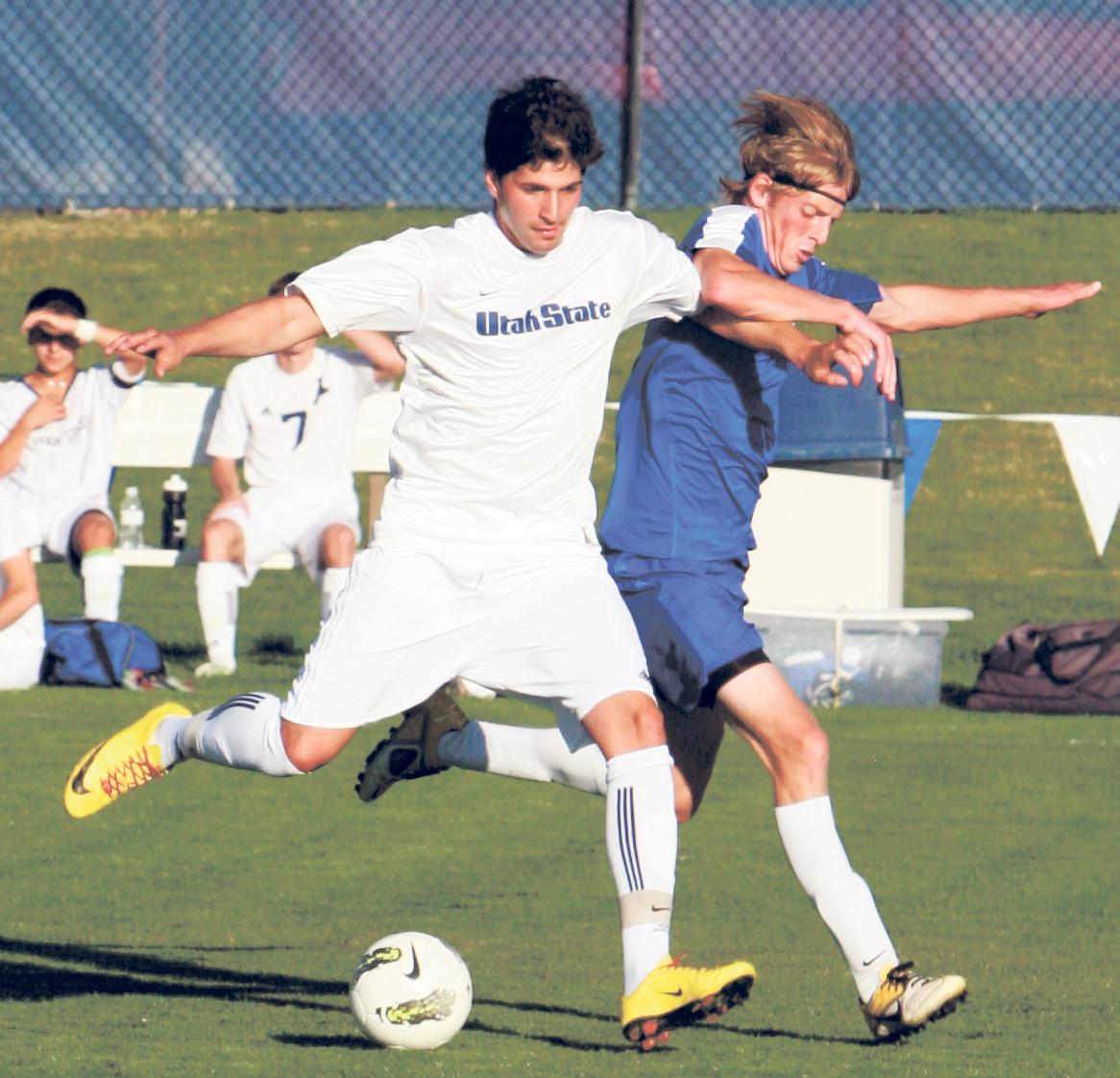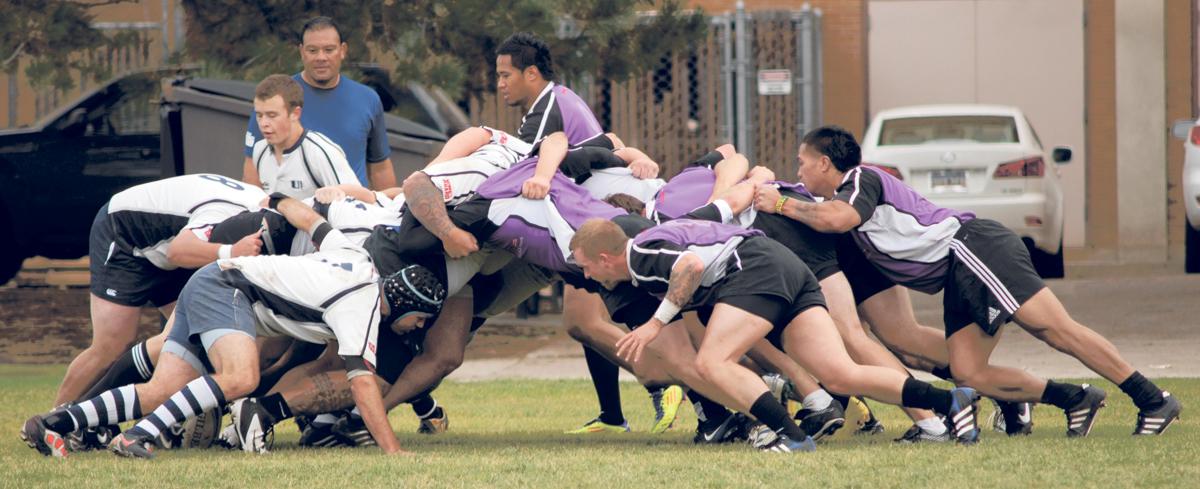Paying the price to play
Club sports are not cheap.
Continuing to prosper alongside noted school-sponsored sports, club sports at USU are student-run organizations that rely on the school, community and the players themselves to fund the expenses of their sports.
Every semester Utah State students pay a $24 campus recreation fee to support the recreation facilities and activities, club sports coordinator Scott Wamsley said. Of the money received, $51,000 goes into the recreation department’s supported clubs. A general fund of $3,650 is put aside so clubs can request extra money for away games or postseason appearances.
The money each club receives is based on an evaluation of club needs and operation expenses. The seven-tier system peaks with tier-seven clubs receiving $7,551-$7,750 and ends with tier-one clubs receiving $1,110 or less.
The evaluation process combines the past three years’ average operating costs and takes into account how much player dues were each year. Each club or member also has to pay a fee to belong to their sport’s national affiliation, a prerequisite to being a club sport under recreation department rules.
Alys Staten, USU’s assistant director of club sports and athletic trainer, said the club sports department encourages joining national governing bodies because of the benefits that come with membership.
“National organizations carry liability insurance to not only cover the facilities that the teams play,” Staten said, “but also carry secondary health insurance as well, which helps out if you get injured or whatnot.”
The recreation department opted to withhold which sports are in which tiers, but Wamsley said funding is based on the criteria and need for funding.
“(First,) prove a need for that sport, and, (second, there) has to be space to practice and play,” Wamsley said. “When funding is tight, you have to be careful on whom you add when your facilities are small or not enough. It’s a tough situation.”
Finding space to play can be a big expense for many clubs. The hockey club, which has the highest operating cost, with an average of $117,288 per year, pays usage fees for practice and games at the Eccles Ice Center.
The hockey team is a tier-seven club and as such receives $7,500 per year from student fees. Staten said the figure is about $2,000 below the norm when compared to other schools, such as the University of Utah, University of Colorado and Colorado State University.
In an email to Staten, Colorado Collegiate Sport Club coordinator Kristopher Schoech said the University of Colorado supports all 34 of its club sports by dividing $100,000 into a tier system. Whatever this doesn’t cover is left to players to make up the difference.
“Dues vary among each team – I know men’s hockey pays approximately $2,400 per player and men’s lacrosse is the highest at $2,800 per player,” Schoech said. “Dues can be offset by how much the team fundraises.”
With a shortage of money for clubs sports, alternative methods are used to get funding. Dues, sponsors and fundraisers are the three main ways clubs receive money, along with funding from the school.
Wamsley said player dues make up the majority of club funding.
“A lot of our clubs’ dues are way lower than the average is,” Wamsley said. “For instance, some hockey club teams are paying upwards to $4,000 to play. Colorado men’s lacrosse team pays $2,500 a man, yearly, in dues.”
Along with dues paid to USU, there are dues paid to belong to the national affiliation. The USU lacrosse team pays $3,500 to belong to the Rocky Mountain Lacrosse Conference and Aggie men’s rugby pays $2,000, for individual and team registration.
However, dues are not enough to cover all expenses. Seeking sponsors from the community and university alumni is another way club sports can raise money, but sponsorships can be difficult to get.
“All 14 team clubs, plus 12 school teams, and four high schools seek funding from the community,” Wamsley said. “It becomes taxing on the community.”
Fundraising has become important for clubs in gaining much-needed money. Staten said clubs utilize fundraising and have become standouts because of this.
“Many clubs push themselves in fundraising, such as rugby in the fun run, which was very successful,” Staten said. “Baseball is the standout this semester for fundraising for sure.”
Baseball, recently bumped up to a tier-seven club, has had success on the field and off. The conference champions raised player dues as well as increased fundraising to get the money they needed.
Rodeo, on the other hand, has struggled with fundraising. The club has only one home rodeo to raise money for the upcoming season. The rodeo club’s one opportunity to raise money competed with at-home hockey and football games, as well as Homecoming activities.
“It was brutal,” Wamsley said.
Dave Smith, the ASUSU recreation chair, said it is important for clubs to get their names out there so their fundraising and games are successful.
“The start is to get the clubs out there first,” Smith said. “We are trying to help the smaller ones out by having the Hurd send out City Grow system emails of scheduled events.”
An increase in student fees for recreation would be helpful, but funding cannot come from the school alone, Wamsley said.
“Clubs need to take a little more responsibility and advertise their games and events well,” Wamsley said. “It’s a group effort — they need to take more responsibility &#
8212; that is part of the student-run program.”
Examples of teams taking the initiative have included advertising with A-frame signs in front of the HPER building and Fieldhouse, as well as banners hung in the Taggart Student Center. Updating team websites and social media have also helped keep fans informed.
Wamsely said having competitive club sport teams is important, not only for the students, but for the university, because competing at a high level and winning brings recognition to the school.
“These club-sport teams are just as important to the university as the athletic teams. They practice just as hard,” Wamsley said. “They are getting the USU name out there whether it’s ultimate Frisbee in Montana, regional baseball in Oregon, hockey in St. Louis or the women’s rugby team in San Diego.”
Club sports aren’t school-sponsored teams, but they wear the USU logo on their chests.
“They pay because they love their sport,” Wamsley said. “That’s what is exciting about these kids.”
– mega.bodi@aggiemail.usu.edu

USU CLUB SPORTS receive student fee money, but students who wish to participate in club sports still pay out of pocket. Some clubs are funded from $7,551-$7,750, while others receive $1,110 or less. Funding is based on evaluation of club needs and operations. File photos


